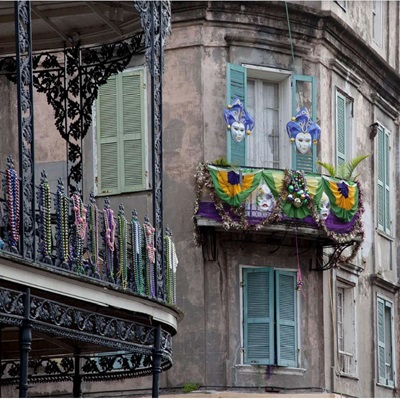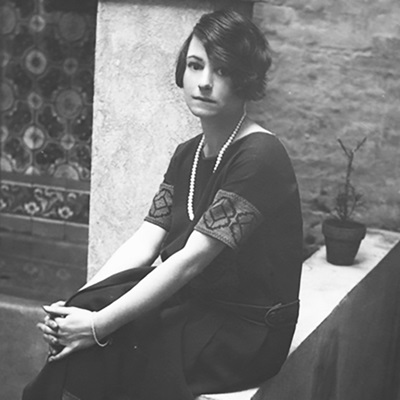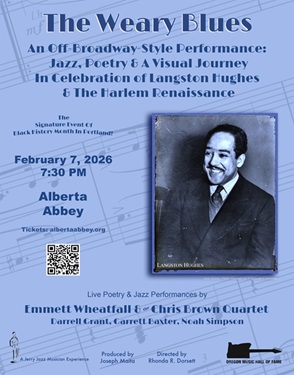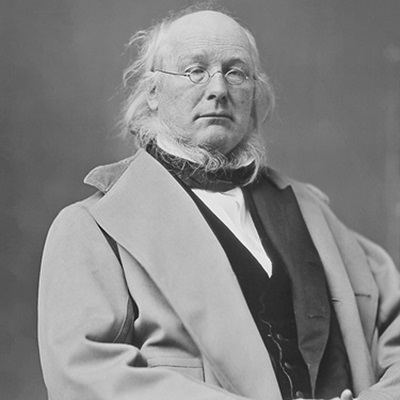There were but four major galaxies in the early jazz universe, and three of them — New Orleans, Chicago, and New York — have been well documented in print. But there has never been a serious history of the fourth, Kansas City, until the recent publication of Kansas City Jazz: From Ragtime to Bebop — A History, by Frank Driggs and Chuck Haddix.
 In this colorful history, Frank Driggs and Chuck Haddix explain the Kansas City that was once a neon riot of bars, gambling dens and taxi dance halls, all ruled over by Boss Tom Pendergast, who had transformed a dusty cowtown into the Paris of the Plains. From ragtime to bebop and from Bennie Moten to Charlie Parker, Kansas City Jazz successfully captures the essence of Kansas City’s golden age, when this wide-open, gin-soaked town gave birth to a music that was more basic and more viscerally exciting than other styles of jazz — its singers belting out a rough-and-tumble urban style of blues, and its piano players pounding out a style later known as “boogie-woogie.” The great landmarks like the Reno Club, the “Biggest Little Club in the World,” where Lester Young and Count Basie made jazz history, and Charlie Parker began his musical education in the alley out back play a big part in this book, as do the lives of the great musicians who made Kansas City swing.#
In this colorful history, Frank Driggs and Chuck Haddix explain the Kansas City that was once a neon riot of bars, gambling dens and taxi dance halls, all ruled over by Boss Tom Pendergast, who had transformed a dusty cowtown into the Paris of the Plains. From ragtime to bebop and from Bennie Moten to Charlie Parker, Kansas City Jazz successfully captures the essence of Kansas City’s golden age, when this wide-open, gin-soaked town gave birth to a music that was more basic and more viscerally exciting than other styles of jazz — its singers belting out a rough-and-tumble urban style of blues, and its piano players pounding out a style later known as “boogie-woogie.” The great landmarks like the Reno Club, the “Biggest Little Club in the World,” where Lester Young and Count Basie made jazz history, and Charlie Parker began his musical education in the alley out back play a big part in this book, as do the lives of the great musicians who made Kansas City swing.#
Haddix talks about Kansas City’s unique influence on jazz and American culture in a September 30, 2005 interview with Jerry Jazz Musician publisher Joe Maita.
*
photo Driggs Collection
Downtown Kansas City in the 1920s
“We came to the corner of Eighteenth Street and wham! Everything along that street was lit up like klieg lights. It was one of the most fantastic sights I’ve ever seen in my life. We turned right there. We didn’t figure that we needed to go any further on Troost. There were joints all lit up and going full blast on both sides of the street for several blocks. One of the first places I remember seeing was the Yellow Front Saloon. Another was the Sawdust Trail. And everywhere you went, there was at least a piano player and somebody singing, if not a combo or maybe a jam session. There was so much going on that I couldn’t believe my eyes or ears all of those joints along that strip were wide open, and there were ambulances and police cars with sirens just sitting out there ready to roll…the action was greater than anything I ever heard of.”
– Count Basie
*
Clouds, by Andy Kirk and the Twelve Clouds of Joy
_____________________________________
JJM You wrote, “Located in the heart of America, straddling the state line between Kansas and Missouri, Kansas City at first glance appears to be an unlikely location for the development of a unique jazz style.” How was Kansas City transformed from a cow town into the “Paris of the Plains?
CH Quite a few factors came into play. Kansas City is strategically located in the confluence of the Kansas and the Missouri rivers, and because of this it became a business center early on. It was also the point of departure for all three of the wagon trails west, which meant there was a lot of movement of goods moving in that direction, and raw materials going east. Also, the city fathers jockeyed ahead of the other local towns to establish the first railroad bridge across the Missouri River, which made Kansas City a railroad hub in the late eighteen-hundreds. The businesses in the city were quite diverse, from the large meat packing industry to the ragtime publishing center Kansas City became nationally known as at the turn of the century.
The city was under the control of a political machine headed by Tom Pendergast, and under his watch vice and corruption thrived. In addition to being a business center, Kansas City was now an entertainment center, attracting musicians to the city who could make a living by playing in clubs on Twelfth Street and in the theaters. It transformed Kansas City into a cosmopolitan center of theaters, opera houses, and nightclubs.
JJM So, as head of the local Democratic Party, Pendergast was able to control state politics during Prohibition?
CH Yes, and state officials looked the other way while liquor flowed freely. On top of this, there was a red light district on Fourteenth Street and gambling all over town, so Kansas City was a twenty-four hour town at that time.
JJM What bands and musicians first established Kansas City’s reputation as a music center?
CH Kansas City’s reputation as a music center was originally established by the ragtime publishing houses in town. Kansas City’s address was on all the music that people bought. In fact, “Twelfth Street Rag” — which was dedicated to the city’s bustling Twelfth Street — was one of the most famous rags. A lot of work was created from the ragtime publishing industry, and musicians came to play in the theaters and clubs. The earliest band to really establish Kansas City’s reputation was the Coon-Sanders Original Nighthawk Orchestra, and they did so with late night radio broadcasts from the Plantation Grill in the Hotel Muehlebach. These programs, aired on WDAF, could be picked up from Maine to Hawaii, so people all across the country became aware of Kansas City as a music destination.
JJM The bandleader Eddie Kuhn brought saxophonist Loren McMurray into Kansas City…
CH Yes. Eddie Kuhn, with Loren McMurray on saxophone, and Paul Tremaine’s Aristocrats of Rhythm were the early white bands that helped establish Kansas City’s reputation. McMurray was one of the country’s first saxophone virtuosos. Unfortunately, he died very young, and he was little known until Frank Driggs and I told his story in our book.
JJM Why was it that the early white musicians received so little credit for establishing Kansas City’s reputation as a jazz center?
CH For one thing, they were basically dance bands that played a little jazz. Also, they did not play jazz in the distinctive Kansas City style. Instead, they played a highly orchestrated style of jazz that was modeled after Ben Bernie and some of the other early white dance bands. So, these bands were never really associated with Kansas City’s distinctive sound.
JJM Their sound was more typical of what was heard from an orchestra like Paul Whiteman’s?
CH Yes, they were highly orchestrated and played for dancers. They did play some jazz, and in fact helped define the jazz age, but they didn’t play a distinctive Kansas City style of music. These orchestras could have come from anywhere, really.
JJM What was the distinctive Kansas City jazz sound, and how did it originate?
CH The Kansas City jazz sound and style evolved out of ragtime, the blues, and band music. With the ragtime you get the syncopation, with the blues you get the feel, and with the band music you get the virtuosity, musicality and arrangements needed to perform the music.
JJM The music coming out of Kansas City was substantially different from the music coming out of New Orleans and Chicago, wasn’t it?
CH Yes. Kansas City jazz evolved along original lines. There was a direct connection between the music of New Orleans and Chicago, but not of New Orleans and Kansas City. Most of the musicians of New Orleans — like Louis Armstrong and King Oliver, for example — migrated to Chicago, not to Kansas City. But the Kansas City artists were well aware of the New Orleans style because of the recordings they had access to. The Winston Holmes Music Company, located on Eighteenth Street, was the only “Negro” music house in town, and he carried a wide variety of recordings, including those by the early jazz greats of New Orleans. So the influence of New Orleans was there, it was just not as direct as Chicago.
JJM The Kansas City sound assumed a more urban style of blues…
CH Blues informed the early Kansas City jazz style considerably. It is really an orchestral expression of the blues, but it also accompanied blues singers. Ada Brown was one of the first to record Kansas City jazz, accompanied by Bennie Moten’s orchestra, and Mary Bradford was a great blues shouter who worked in Kansas City at the time. You can also hear the blues in Moten’s recordings of “Elephant’s Wobble” and “Crawdad Blues.”
JJM Was Moten’s among the first of Kansas City’s bands introduced to a national audience?
CH Yes. He was the first to take the Kansas City style to the East Coast. The great goal of Kansas City bands — beginning with Moten and continuing on through Jay McShann and Charlie Parker — was to go to New York and make it there, because that was where the entertainment center was, of course, and that is where many of the jobs were. In Kansas City, Moten could work at the Pla-Mor Ballroom, the El Torreon Ballroom, and Paseo Hall, but he really couldn’t gig every night, so he had to get out into the territories and to New York, where there were many ballrooms they could play in.
Moten’s trip was supported by his record company, Victor, a major national label who, in addition to selling records, would underwrite the tours of their artists. He returned to the East Coast on a number of occasions, and the audiences liked him because his sound differed from that of the bands of the East, notably Duke Ellington’s and Fletcher Henderson’s. It’s accented beat was known as the “Western Style,” which was a very distinctive sound.
JJM It has been said that Moten made the mistake of abandoning his style by trying to emulate the bands of Ellington and Henderson.
CH While he was influenced by the Eastern bands, ultimately he transcended those influences to create a hard, swinging Kansas City style that was anchored by a driving rhythm section and powered by Walter Page’s walking bass. In addition to that, the sections were riffing against each other for counterpoint, and the sections were riffing against the soloist in what became an orchestral call and response. All of this was played using head arrangements, which means the musicians played from memory. It created a hard, swinging style that was the hallmark of the Kansas City sound. This was in 1932, three years before Benny Goodman.
JJM Moten hired Eddie Durham as arranger after his battle with the orchestra led by George E. Lee, so, there was some precedent for arranging.
CH Yes, there was. One of the problems Moten had early on was that he didn’t have an arranger, and to address this he hired Durham in order to modernize the band so it could compete with the Eastern bands on their own terms.
JJM You talked earlier about how the Kansas City bands had to go out and play in other parts of the country. At the same time, there was a great deal of interest among the national bands to play the great ballrooms of Kansas City. How did these ballrooms help establish Kansas City as a stop for national bands?
CH The country was dance crazy during the twenties. The Pla-Mor Ballroom — known as the “Million Dollar Ballroom” – -opened on Thanksgiving, 1927. It was located on the corner of Linwood and Main, and it was actually an entertainment complex that also included an ice arena and a bowling alley, with the ballroom being upstairs. The El Torreon Ballroom, on Thirty-first and Gillham Road, opened the following month, giving Kansas City two major ballrooms within walking distance of each other. These venues gave the great bands a place to play on Friday and Saturday nights. On Sunday they would play at Paseo Hall, which was a big dance hall on Fifteenth and Paseo that held one thousand, five hundred dancers. They played there on Sunday because many of the local African Americans didn’t have to work on Monday.
JJM Did any of the nightclubs cater to an integrated audience?
CH Yes, a number of them were “black and tan” clubs — the Sunset, the Lone Star and the Reno among them. In these clubs, the African Americans were usually up in the balcony while the whites were down on the dance floor. The Reno Club, by all accounts, was integrated.
JJM Once the ballrooms opened, the territory bands began coming to Kansas City
CH Yes. Andy Kirk first arrived in July of 1929. He played the Pla-Mor, liked what he saw of the rest of the area, and ended up staying in Kansas City. The Blue Devils came here also, and Jesse Stone’s Blue Serenaders played regularly at Paseo Hall. That kind of sparked the great orchestra wars of the twenties and thirties. Stone would come to town and engage in musical skirmishes with George E. Lee at Paseo Hall, with one orchestra on a bandstand on one side of the hall, and the other at the bandstand at the opposite side. They would alternate sets, and the winner would be determined by the sound of the audience clapping. These were quite spirited affairs, and the band’s honor was usually at stake. At times the winner would get, for example, a summer engagement at Fairyland Park.
JJM You wrote, “The battles at the musician balls were usually waged in the spirit of a Texas death match in professional wrestling, more for show than blood, but the contest between Moten and Lee assumed deeper meaning.” Can you describe this 1929 battle between Moten and Lee?
CH Their rivalry dated back ten years. Moten’s had always been the top band of Kansas City, and Lee was always slow to catch up. To deal with this, Lee hired Jesse Stone — who was a brilliant arranger — to modernize the band’s sound. Lee subsequently defeated Moten at a battle of the bands at the Frog Hop in St. Joseph’s, Missouri, which called into question Moten’s status as the top-ranked orchestra in Kansas City, and actually caused Moten to reassess what he was doing as a bandleader. They later met at Paseo Hall in the battle you asked about. There was a lot at stake, and while no winner was declared, at least Moten maintained parity with Lee.
JJM Moten and Lee were two very different personalities, weren’t they?
CH Yes. Moten was a good businessman and a good bandleader who was very generous with his band financially and encouraged their creativity. Lee was just the opposite — while he was a talented saxophonist and vocalist, he was a very stingy bandleader. He alienated many of the musicians who passed through his band, even going as far as fining his own sister for violations. He wasn’t as creative as Moten and didn’t foster creativity from his band. Because he was an overbearing leader, his band suffered from constant turnover, whereas Moten led a very stable organization.
JJM The Blue Devils were one of the most significant territory bands. What was their sound like compared to that of Moten’s band?
CH The style and sound of the Blue Devils really informed what the Moten band eventually became. The Blue Devils were led by a bass player, Walter Page, who played a string bass that could be heard above the orchestra. He was a pioneer of the instrument, having developed the walking bass line technique for jazz music. His playing and their driving rhythm section set the tone for the entire band. Also, the Blue Devils were the first territorial band to use pronounced riffs, played by some of the greatest musicians anywhere; Page, Count Basie, Eddie Durham, “Hot Lips” Page, and Buster Smith were all members of the band. They had real thick books because a number of arrangers worked for the band. So, while they were not as well documented as Moten’s band, it was clearly the sharper band, which is why Moten coveted members of the Blue Devils. At one point he even announced that he had taken over the Blue Devils, but it was a little premature. In the end, though, he picked them off one by one, and once they were in his band, he absorbed the Blue Devils style.
JJM Count Basie was one of the Blue Devils who left to join Moten…
CH That’s right, and Basie actually hadn’t heard a big band before he heard the Blue Devils. Although he was in the band for just a short while, he used to say, “Once a Blue Devil, always a Blue Devil,” so he was always a Blue Devil in his heart.
“There was such a team spirit among those guys, and it came out in the music, and you were part of it. Everything about them really got to me, and as things worked out, hearing them that day was probably the most important turning point in my musical career so far as my notions about what kind of music I really wanted to try to play was concerned.”
– Count Basie
JJM What led to Basie taking over Moten’s band?
CH He took over the band, but not directly after Moten’s death. Basie didn’t particularly like working with Bus Moten, Bennie’s brother, and felt things weren’t the same after Bennie’s death. While he was close to Bennie, he wasn’t quite as close to Bus, and felt that the band was headed for a musical dead end. He wanted to move on, and did so by going into the Reno Club. Once there, he began bringing in the former Blue Devils who didn’t want to stay in Bus Moten’s band. One by one, Basie brought in former members of the Blue Devils and of Moten’s band to the Reno Club, which resulted in the formation of his great nine-piece band.
JJM It was at the Reno Club where he introduced the spook breakfast parties…
CH Yes, they were something he remembered from his days in Harlem. The “spook” referred to the late night hours of the jam sessions, which would begin at four o’clock Sunday morning and continue all day Monday. These would later be known as Blue Monday parties, which is a tradition that continues in Kansas City.
JJM You write, “As the Depression ravaged the entertainment industry nationally, Kansas City managed to hold its own as the entertainment Mecca of the Midwest. The Depression actually enriched Kansas City’s musical stock.”
CH Yes, it did. The Depression did take its toll on the great territorial bands from Texas and Oklahoma — an area that was hit particularly hard because the dust bowl blew away all financial opportunities. Many of the musicians from those areas came to Kansas City and joined local 627, and their presence really enriched Kansas City’s musical style. Kansas City did fine during The Depression — the liquor flowed unabated during Prohibition, the red light district was open for business, and there were as many as fifty clubs between Twelfth and Eighteenth Streets, which created plenty of work for musicians.
Corruption and vice were specific undertakings in Kansas City during this time. Drug stores had a slot machine on the counter, and there were Keno parlors and speakeasy’s as well. This sort of activity was going on all over the city. Tom Pendergast was a saloon owner, and he was a gambler, so he fought to advance those things in Kansas City. Since Pendergast’s political machine controlled the police department, they looked the other way during Prohibition.
JJM An interesting person who came in and out of your story was the journalist Dave Dexter, who was a young man in his early twenties while all of this was going on.
CH Yes, he was really the champion of Kansas City jazz, bringing it to the nation’s attention. Dave was a Kansas City native, having grown up in the northeast section. He was a writer for the Journal-Post, which was the local democratic paper. He started out writing obituaries, and worked his way up to writing nightclub notes, which allowed him to cover the music scene all over town during its heyday. Kansas City jazz received very little, if any, national press before 1935. Moten had gone east but nobody was writing about the Kansas City music scene in a major publication. When Downbeat started in 1935, he wrote about Kansas City jazz in it, and did so in Metronome as well. His contributions to these publications is when the rest of country was first made aware of what was happening in Kansas City.
JJM It sounds as if Dexter may have goaded John Hammond into coming to Kansas City.
CH Yes. He and Hammond both contributed to Downbeat, and in July of 1935, Dexter challenged Hammond to come to Kansas City to check out the Count Basie band at the Reno Club. Once he threw the gauntlet down publicly, it made other promoters like Milt Glaser aware of what was happening in Kansas City. As a result, Hammond really had to come, and when he did, he absolutely fell in love with the Basie band, and began working on his behalf — using his contacts with booking firms and the record labels to bring Basie to the national forefront. He was ultimately undercut by Jack Kapp and Decca Records before he could record Basie, but he worked tirelessly to bring the band along.
JJM And there was the Benny Goodman connection as well.
CH Yes, Goodman was Hammond’s brother-in-law, and Goodman also helped with Basie’s career — it was his nod that got Basie the contract with the Willard Alexander Agency. Goodman was also the one who breached the color barrier, having brought Lionel Hampton and Teddy Wilson into his group. When he played at Carnegie Hall, he invited Basie and members of his band to sit in, which really helped established Basie’s career, as well as define Kansas City jazz as a distinct form.
JJM What was Jay McShann’s introduction to Kansas City?
CH He came to Kansas City by accident. He was on his way to Omaha to see his uncle, and while taking the bus here, stopped off to check out the Basie band at the Reno Club, but instead found Bus Moten on the bandstand. This was in late 1936, after Basie left town. The bassist Billy Hadnott convinced Jay to stay, and he did, settling right into the bright lights, having a ball.
JJM Dave Dexter was a big fan of McShann’s but not of Charlie Parker’s. Why?
CH Dexter really liked McShann. Jay played a gig at the Monroe Inn on Independence Avenue in the northeast section of town, not far from where Dexter lived with his parents. He would stop by and check Jay out. He recognized his potential and wrote about it in his Metronome column, which really helped McShann’s career along. Unfortunately, Dexter did not like Charlie Parker. While he admired him and his music, and wrote that he could charm the leaves off the trees, he didn’t like him personally. Evidently, they had a run-in where Parker, according to local legend, gave Dexter a “hotfoot,” and Dexter never forgave him for it. But it may not have mattered anyway because Dexter didn’t really like bebop. He was kind of an old-school cat.
JJM When you think of Kansas City jazz, you can’t help but think of Parker and the impact he made on music…
CH He started playing when he was still in short pants. Mary Lou Williams remembers squiring Charlie to gigs — along with Mary Kirk, Andy Kirk’s wife — and he was still in short pants at the time, probably around twelve or thirteen years old. He gigged around town at that age, playing in small combos in joints owned by Felix Payne. He became a professional musician in 1935, after joining a group called the Ten Chords of Rhythm, led by Lawrence Keyes, who was a friend of his from Lincoln High School. So, he began his professional career literally when he was fifteen years old. He joined the union and left school in December of 1935 because he knew he wanted to be a professional musician.
The bar was set very high at the time because there were so many great alto and tenor players in town — Lester Young and Buster Smith were both there, playing with the Basie band, and Dick Wilson and Budd Johnson were also around then. These musicians set a pretty high standard, and it is important to remember that Bird was only fifteen years old at the time all this was going on. By the time he was sixteen, after about a year of apprenticeship, of playing in jam sessions, and after Jo Jones’ rebuke of him and his subsequent retreat to Musser’s Ozark Tavern near Eldon, Missouri, he had become a musically changed man.
Bird’s story is one of the more interesting aspects of the book, really, because so much of what has been written about Bird and Kansas City is wrong. He was actually a big star in Kansas City as a member of the Harlan Leonard band, and was advertised as “Little Charlie Parker, saxophonist.” So, he was very well known and well respected within the musical community. He did move around quite a bit, and played at Greenleaf Gardens on Twelfth Street before joining the Ten Chords of Rhythm, who eventually folded in early 1936. After that he went back to work in the clubs, played a short stint with Jay McShann and eventually landed with the Harlan Leonard band. The work with Leonard didn’t last, which is when he went to New York. Legend has it, however, that he went to New York and made his musical breakthrough, when in fact he had actually already made it in Kansas City, and where he had already been experimenting with the harmonic changes that would lead to bebop. The old cats here called it “crazy music.” On his way to New York he stopped in Chicago and played at Club 65 with a borrowed saxophone, where he proceeded to just blow everybody away, according to Billy Eckstine. He was already a fully formed musician when he left Kansas City.
JJM Ultimately the climate that spawned much of the creativity in Kansas City was scrutinized by politicians whose political agenda was in opposition to that of Tom Pendergast’s. How did the musicians of Kansas City become the casualties of the cultural war between Pendergast and Missouri governor Lloyd Stark?
CH Stark was from eastern Missouri, where he owned an apple orchard. In 1936, Pendergast helped get Stark elected governor, but once he took office, Stark turned on Pendergast because he had aspirations for the Senate. Stark was a bit of a zealot, and as governor embarked on a mission to clean up Kansas City and the state of Missouri. Pendergast was able to fend him off for a while, but eventually Stark joined forces with J. Edward Hoover and the local district attorney Maurice Milligan in an effort to clean the city up. Pendergast was indicted on income tax evasion and the political machine fell apart at that point, and the cleanup began in earnest, eliminating some of the work for the musicians. Clubs had to close at midnight, which cut their profits and caused owners to replace musicians with jukeboxes. Many of the musicians had to find day jobs, and many others moved out of Kansas City. It put a damper on the Kansas City jazz scene, which changed the tone of the entire city.
JJM I can’t help but wonder if this cleanup was motivated because many of the central characters of the Kansas City culture were black?
CH Yes, you are absolutely right, and African Americans were an easy target at the time.
JJM It could also be that the culture they were popularizing was looked upon as a threat by the Lloyd Stark’s and J. Edgar Hoover’s of the world, and it inspired them to shut it down. Perhaps if the Coon-Sanders Orchestra was at the center of the Kansas City entertainment culture rather than the bands of Jay McShann and Harlan Leonard, they would have looked the other way.
CH The cleanup was concentrated on Twelfth Street and in the Eighteenth and Vine area. There were a few safe havens in what they called “out in the county,” which was beyond Seventy-fifth Street and outside the city limits. The clubs there — primarily white — were kind of spared.
JJM Was there ever an attempt made at reviving the clubs?
CH The clubs rebounded in the forties, when a number of them sprang up. Scott’s Dinner Playhouse at Eighteenth and Highland was a very popular club, and the site of the Cherry Blossom became the Chez Paris. The El Capitan returned to Eighteenth Street, and other clubs returned to Twelfth Street, and there was Tootie’s Mayfair on Highway 40, and there was the Half-a-Hill Tavern. This continued through the sixties, and actually the scene is vibrant today as well.
JJM What is at the intersection of Eighteenth and Vine today?
CH The American Jazz Museum is there, and the Lincoln Building is still there. A vital part of Kansas City remains at that junction.
JJM Do people have a good understanding of Kansas City’s role in the history of American music?
CH We could certainly do a better job in celebrating Kansas City jazz, and understanding Kansas City’s contribution to the development of music in general. If you think of it, ragtime came out of Kansas City, as did the blues, swing music, bebop, and Joe Turner — who had a great deal of influence on rock and roll. So many different genres of music have been influenced by the Kansas City style.
_____________________________________
photo Driggs Collection
*
“Don’t hang your head when you see those six pretty horses pullin’ me.
Put a twenty-dollar silver piece on my watch chain,
Look at the smile on my face,
And sing a little song to let the world know I’m really free.
Don’t cry for me, ’cause I’m going to Kansas City.”
– Music by Charlie Parker and lyrics by King Pleasure, “Parker’s Mood,” 1953
_____
Kansas City Jazz:
From Ragtime to Bebop — A History
by
Frank Driggs and Chuck Haddix
*
About Chuck Haddix
JJM Who was your childhood hero?
CH My childhood hero was Ray Charles. It was through Ray that I first heard soul music and became introduced to African American music forms.
*
Chuck Haddix is the Director of the Marr Sound Archives at the University of Missouri-Kansas City. A native of Kansas City, he hosts a weekend radio program on KCUR FM called “Fish Fry.” His writing has appeared in Down Beat and Living Blues.
_______________________________
Chuck Haddix products at Amazon.com
Frank Driggs products at Amazon.com
_______________________________
This interview took place on September 30, 2005
*
If you enjoyed this interview, you may want to read our interview with William Kenney, author of Jazz on the River.
_______________________________
# A portion of the text from publisher.
Photos used by permission of author











































